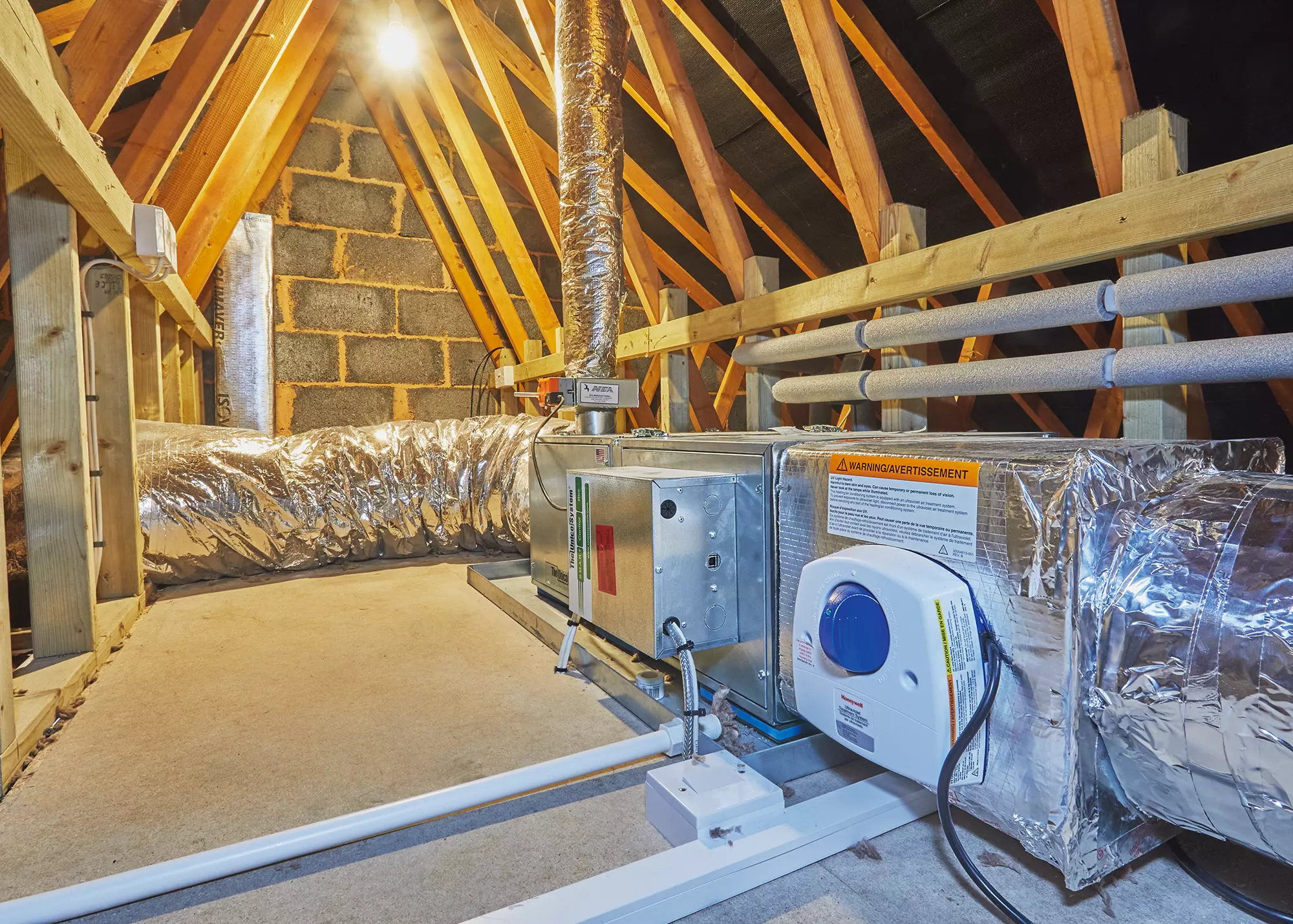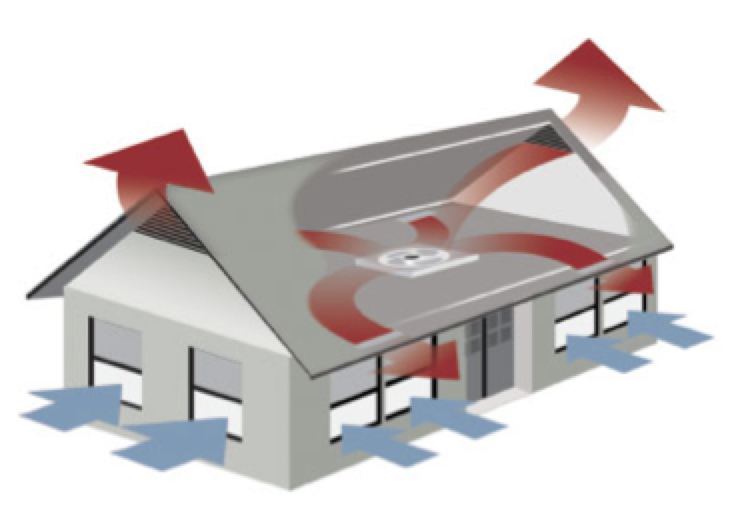Home Ventilation Melbourne Solutions for Energy-Efficient Homes
Wiki Article
Comprehending the Relevance of Home Ventilation for a Healthier Living Setting
Home air flow plays a crucial function in preserving a healthy and balanced living setting. It helps with the exchange of exterior and indoor air, which is vital for improving air quality. Without proper ventilation, homes can become breeding premises for toxins and irritants. The effects of poor air blood circulation can be significant. This brings up the inquiry of how home owners can efficiently carry out air flow approaches to safeguard their health and well-being. Understanding these methods is imperative.
The Basics of Home Ventilation
Home ventilation works as a necessary part of interior air high quality and convenience. It entails the procedure of trading stagnant indoor air with fresh outside air, thereby minimizing humidity and controlling temperature. Proper air flow systems can consist of all-natural techniques, such as open windows and vents, as well as mechanical systems, such as exhaust fans and air exchangers. Reliable home air flow aids protect against issues like indoor mold growth and the accumulation of hazardous bits. It additionally boosts total power performance, as well-ventilated rooms can preserve comfortable temperatures with much less dependence on heating and cooling down systems. Recognizing the essentials of home ventilation is important for house owners seeking to create a healthier living environment for themselves and their family members.
Common Resources of Indoor Air Contamination

Although lots of may not understand it, indoor air pollution can stem from numerous sources within a home. Common factors consist of unpredictable natural substances (VOCs) released from paints, solvents, and cleansing items. Household appliances, such as gas ovens and fire places, can launch hazardous gases like carbon monoxide gas and nitrogen dioxide. In addition, mold and mold thrive in moist areas, releasing spores that affect air high quality. Family pet dander, dirt mites, and pollen can gather inside your home, additional worsening contamination degrees. Smoking cigarettes inside your home generates poisonous chemicals that stick around airborne. Building materials, consisting of asbestos and formaldehyde, can off-gas dangerous materials. Acknowledging these resources is vital for keeping a healthier interior setting and promoting efficient air flow techniques.
Wellness Effects of Poor Air Flow
Interior air pollution can have considerable wellness implications, particularly when ventilation is poor. Poor ventilation can cause the buildup of harmful toxins, such as unstable natural compounds, mold, and particulate matter. This build-up might result in breathing problems, consisting of bronchial asthma, allergic reactions, and chronic obstructive pulmonary illness. People might experience symptoms like headaches, tiredness, and inflammation of the eyes, nose, and throat. At risk populaces, such as children and the elderly, go to greater threat for severe health and wellness impacts. Long-lasting direct exposure to inadequately ventilated atmospheres can additionally add to a lot more significant conditions, including cardio diseases. Subsequently, making certain proper ventilation is crucial for maintaining a healthy living environment and decreasing the risk of health complications associated with indoor air contamination.Reliable Air Flow Methods for Your Home
Appropriate ventilation is important for keeping a healthy and balanced indoor atmosphere, and executing reliable techniques can greatly boost air quality. Home owners can start by ensuring that exhaust followers are mounted in kitchen areas and bathrooms to get rid of excess wetness and smells. Opening home windows consistently allows fresh air to flow, especially throughout mild climate. Additionally, utilizing air cleansers with HEPA filters can help record airborne toxins. For homes with heating and cooling systems, keeping heating and cooling systems and altering filters routinely is essential for peak performance. Including natural air flow techniques, such as cross-ventilation, can likewise boost air flow. Ultimately, securing any type of leakages in windows and doors avoids unwanted drafts, which can interfere with regulated airflow, ultimately bring about boosted interior air top quality and convenience.Keeping Optimum Air Top Quality Year-Round
To maintain perfect air high quality year-round, house owners have to take on an aggressive approach to handling their interior setting. Regularly keeping track of indoor air high quality is vital; this consists of checking for contaminants such as dust, mold, and unpredictable organic substances (VOCs) Implementing effective air flow systems, such as exhaust fans and air cleansers, can substantially lower airborne contaminants. Additionally, routine maintenance of a/c systems warranties peak performance and air blood circulation. House owners should also take into consideration humidity levels, as extreme wetness can cause mold and mildew development. Seasonal adjustments may necessitate adjustments in air flow approaches to accommodate differing outside air quality. By focusing on these practices, homeowners can develop a healthier space, advertising overall health for all passengers throughout the year.Frequently Asked Inquiries
Exactly How Can I Tell if My Home Requirements Better Air Flow?
To figure out if a read this home requires far better ventilation, one need to observe indications such as persistent moisture, mold and mildew growth, stuffy smells, condensation you can try this out on windows, or raised allergy signs and symptoms, indicating insufficient airflow and potentially inadequate indoor air high quality.What Are the Signs of Poor Indoor Air High Quality?

Can Houseplants Improve Indoor Air Quality Properly?
The efficiency of houseplants in enhancing interior air high quality is discussed. While some studies suggest they can absorb contaminants and generate oxygen, their general impact may be very little compared to proper air flow and air purification systems.Exactly how Commonly Should I Change My Air Filters?
The frequency of air filter modifications commonly depends on use and filter kind. Generally, it is suggested to change filters every 3 months, though homes with allergies or family pets might require more regular adjustments for perfect efficiency.Exist Any Type Of Specific Air Flow Equipments for Allergy Sufferers?
Numerous ventilation systems, such as HEPA-filtered systems, properly lower irritants in the air. Home Ventilation Melbourne. These systems trap plant pollen, dirt, and family pet dander, providing allergy sufferers with a cleaner, healthier indoor atmosphere while handling air top quality efficiently
It facilitates the exchange of outdoor and interior air, which is essential for boosting air high quality. Home ventilation serves as an important element of indoor air quality and convenience. It involves the procedure of exchanging stagnant indoor air with fresh outside air, therefore lowering moisture and regulating temperature level. Indoor air pollution can have significant health effects, specifically when ventilation is poor. Correct ventilation is Look At This necessary for keeping a healthy indoor setting, and carrying out efficient strategies can significantly improve air top quality.
Report this wiki page